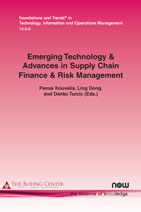Corn, Soybeans or Fallow: Dynamic Farmland Allocation under Uncertainty
By Onur Boyabatli, Singapore Management University, Singapore, oboyabatli@smu.edu.sg | Javad Nasiry, Hong Kong University of Science and Technology, Hong Kong, nasiry@ust.hk | Yangfang (Helen) Zhou, Singapore Management University, Singapore, helenzhou@smu.edu.sg
Abstract
This chapter develops a theoretical basis for understanding the trade-offs facing a farmer for allocating his farmland among several crops over multiple growing seasons. Specifically, we focus on the farmland allocation among two cash crops (corn and soybeans) and letting the farmland lay fallow to rejuvenate the soil and increase the revenue for the crop grown on this farmland in the subsequent seasons. In each growing period, the farmer chooses the allocation in the presence of revenue uncertainty for each cash crop, and crop rotation benefits across periods, where revenue is stochastically larger and farming cost is lower when a cash crop is grown on a rotated farmland (where the same crop was not grown in the previous period). We solve for the optimal dynamic allocation policy.
Emerging Technology & Advances in Supply Chain Finance & Risk Management
Emerging Technology & Advances in Supply Chain Finance & Risk Management reflects the state-of-the-art in research thought leadership in supply chain finance and risk management, and it contains great expository pieces on how advanced technologies are shaping supply chains and risk management within them. You will also find ideas on how supply chain finance and risk management can be best taught in our classrooms.
The volume is divided into three parts, each part reflecting a major active research area of the field including: Part 1: Supply Chain Finance; Part 2: Financial Hedging and Commodity Risks; Part 3: Operational Strategies and Risk Management.
Part 1 deals with the broad area of supply chain finance and programs that will better allow for working capital management within supply chains. Part 2 introduces concepts of hedging financial and operational risks due to uncertain commodity prices, fluctuating exchange rates, and volatile interest rates. Emphasis is placed on understanding how financial hedges can be used for hedging relevant supply chain risks in a way that reflects modern view of financial risk management. Part 3 examines topics and solution approaches reflecting the more traditional treatments in the contemporary literature of operational and supply chain risks. This volume provides rich implications for future research directions in efforts to master the new complexities and uncertainties of the global business environment and better understand the impact of advanced technologies in global supply chains.

Companion
Foundations and Trends® in Technology, Information and Operations Management, Volume 12, Issue 2-3 Special Issue: Emerging Technology & Advances in Supply Chain Finance & Risk Management
See the other articles that are also part of this special issue.